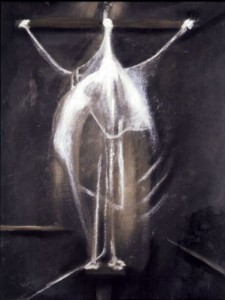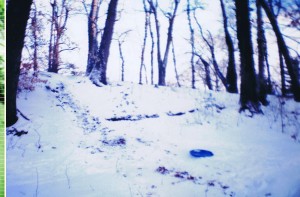 According to an enthusiastic radio report, children benefit from creative play. The reporter could say this with confidence because an interdisciplinary team of psychologists and anthropologists have confirmed it. Benighted hick that I am, I’ve depended on unsubstantiated hearsay for the past seventeen years of parenting. As they say in baseball, “I’d rather be lucky than good.”
According to an enthusiastic radio report, children benefit from creative play. The reporter could say this with confidence because an interdisciplinary team of psychologists and anthropologists have confirmed it. Benighted hick that I am, I’ve depended on unsubstantiated hearsay for the past seventeen years of parenting. As they say in baseball, “I’d rather be lucky than good.”
I mean, I suppose luck is better. The scientific community has not yet established, so far as I know, a robust body of empirical evidence regarding the relative advantage of luck over skill, though a large number of politicians and corporate CEOs seem to substantiate this adage.
I’m theologically and politically inclined toward folk wisdom, and therefore suspicious of scientism. That doesn’t mean that I oppose scientific inquiry, however. Without a doubt, some of the folk wisdom passed down by my grandmother is flat-out wrong. I know several African-Americans, for example, who do not in fact know all the other African-Americans. And the eyesight difficulties I presently suffer did not commence until well after those awkward boyhood puberty years.
So by all means, Science, lay waste to Nana’s oeuvre of accumulated insights on the human condition. Report with great fanfare that we should not be starving fevers, or feeding colds, or letting sleeping dogs lie. Civilizations survive based on their ability to transmit accumulated wisdom across generations, and this body of knowing certainly includes the valid findings of its scientists.
I get the feeling, however, that the scientific method, rather than being one avenue by which we may come to know something, has become the only respectable avenue. I suppose it’s helpful for scientists to confirm that most people prefer mates who are sexually attractive, or that exercise is good for you, or that bullies pick on unpopular kids—each being a finding reported in science journals in recent years—but was our knowledge of these facts less valid before scientists undertook to measure them?
Less quantified, perhaps. But less valid? Given how often empirical studies are nullified or contradicted, we can’t even say with confidence that scientific studies have a lower error rate than folk wisdom. So why this privileging—if I may borrow a term from my non-quantitatively oriented colleagues in the literature department—of science? Why report scientific confirmation of the obvious as if we’d had no previous sense of its truth?
None of this is to say there can’t be benefits from studying our beliefs more closely. For example, you could probably anticipate the finding of recent childhood abuse research, which reveals that victims have a greater likelihood of mental and emotional difficulties as adults. Before you call your senator to complain about truckloads of tax dollars going to academic frauds, however, consider that neuroscientists have recently documented the aforementioned damage with brain scans. In other words, abusing children can literally scar their brains.
Abuse survivors have weaker connections, for example, between the prefrontal cortex, where thought is processed, and the hippocampus, which functions, among other ways, as a “fear filter”—the source of rationality that keeps you calm on Halloween night, even though you are surrounded by people in vampire and zombie costumes. This comports with observations by counselors specializing in childhood abuse, who note that victims are more likely to exhibit anxiety and fear in a situations that others handle with ease.
Scientists responsible for the study say their finding is valuable for diagnosis and treatment. Now they can scan your brain to determine what’s wrong with you. Neuroscience offers yet another span along the bridge from physiology to psychology.
Nobody is saying we should run an abuse victim through an MRI, give her a calibrated pharmaceutical cocktail, and call her cured. At least not yet. But the danger with privileging scientific findings is that it tempts us to think what we can know most concretely is therefore what’s most important to know. It reduces people to a single dimension, rendering them nothing more than amusing sacks of chemical combinations. Scan the brains of enough abuse victims, perhaps include their spines, maybe for good measure, the electromagnetic impulses cast off by their entire central nervous system working in concert, and pretty soon you forget that they have souls, and likely distorted notions of God and self.
A friend told me about engaging a psychiatrist for help with all-consuming depression. After a few sessions, his doctor leaned forward and said: “What you need is a church, not a psychiatrist.” He then introduced my friend to a preacher, who brought him into the Church, where his soul has been unburdened.
I suspect this is unorthodox psychiatric behavior, even though the current Diagnostic and Statistical Manual of Mental Disorders has an entry titled “Religious or Spiritual Problems.” There’s room at the margins for our spirits, but for the most part our experts are accustomed to looking for solutions to brokenness in the brain rather than the heart. Every time some soul-sickened boy shoots up a schoolroom, journalists declare that the newest community to be thusly shattered is “looking for answers.” The unstated assumption is that those answers can be found in the psyche rather than the soul.
Only now we want to go a step further, simplifying the psyche as well. Science lends itself to the isolation of variables, and its hunger for observable variables further pushes the study of humans into the study of their physical parts. People become fleshy machines, their malaise a malfunction to be isolated and corrected.
In our zeal to know creation, we reduce it to what we can know. Ironically, that entails reducing ourselves. Perhaps that’s simply a necessary cost of progress, but my grandmother always warned that pride goes before a fall. Of course that’s just a correlation; we still have lots of testing before we can confirm it.
Tony Woodlief lives in North Carolina. His essays have appeared in The Wall Street Journal andThe London Times, and his short stories, two of which have been nominated for Pushcart prizes, have been published in Image, Ruminate, and Saint Katherine Review. His website is www.tonywoodlief.com.
Art Pictured: Francis Bacon. Crucifixion, 1933 oil on canvas, 62 x 48.5 cm.











